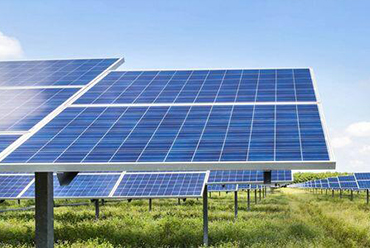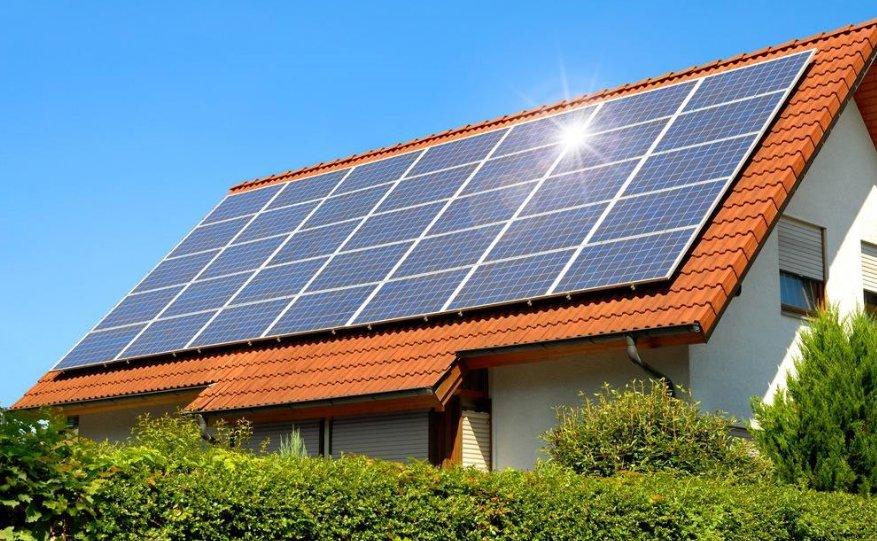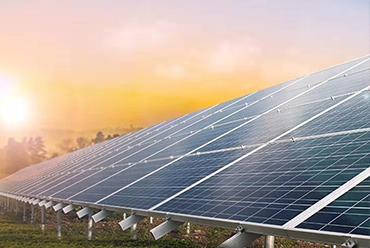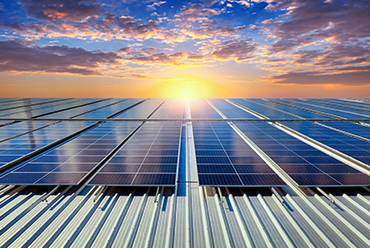
On March 17th, the 2023 Xinjiang Autonomous Region's major projects will resume construction and the first quarter regional major project scheduling meeting will be held. At the Ili Prefecture branch venue located in the Sulagong Industrial Park, Yining City, Xinjiang, the construction of the Yining City Photovoltaic Green Power Hydrogen Production Source Network Load Storage Integration Project will commence. The total investment of this project is 8.146 billion yuan, with an annual planned investment of 1 billion yuan. It mainly includes the construction of a 1 million kilowatt photovoltaic power station, a 2000 cubic meter/hour hydrogen production plant, and a 2 ton hydrogen refueling station. It is reported that on December 9, 2022, Beijing Yihuatong Technology Co., Ltd. signed a strategic cooperation framework agreement with the Yining Municipal People's Government and Yining Lianchuang Urban Construction (Group) Co., Ltd. to jointly promote the construction of the Yining Photovoltaic Green Power Hydrogen Production Source Network Load Storage Integration Project, involving the entire hydrogen energy industry chain, including the construction of photovoltaic power stations, electrolytic water hydrogen production plants, hydrogen refueling stations, hydrogen storage equipment installation and construction Hydrogen fuel cell vehicle applications, etc. The hydrogen production plant is located in the Sulagon Industrial Park in Yining, and it is planned to complete and put into operation the first phase photovoltaic hydrogen production project by the end of 2023. It is expected that the production capacity of the electrolytic water hydrogen production plant will reach 20000 tons of green hydrogen per year, and it is planned to build 20 hydrogen refueling stations, which can meet the daily operational requirements of more than 3000 hydrogen fuel cell heavy trucks. It is understood that after the completion of the project, four major industries including green energy, green transportation, green chemicals and high-end manufacturing will be formed in Yili Prefecture, as well as a major park "the Belt and Road Yili International Hydrogen Energy Demonstration Park". It is expected that by 2025, after the project is put into operation, it will achieve an output value of 12 billion yuan, a profit of 2 billion yuan, and employment for more than 1500 people. It is worth mentioning that in 2023, Ili Prefecture plans to implement 998 projects with a total investment of more than 5 million yuan, with a total investment of 284.6 billion yuan. The planned investment for the year is 101.6 billion yuan, including 298 continuation projects, 325 new projects, and 375 reserve and transformation projects, including 416 projects in transportation infrastructure, agriculture, forestry, water, energy, people's livelihood, ecological and environmental protection, and major industries. The planned investment for the first quarter is 3.96 billion yuan.
Read More
As one of the most professional and biggest solar exhibition in Asia, the 16thEXPO will be held 15th,March ~17th, March in Tokyo, Japan. As one of the leader of the solar mounting supplier, UISOLAR professional team will attend the show and invite you sincerely to visit the exhibition during the time. Exhibition Information: Time:15th, March(Wed.) --17th, (Fri),2023 Location: Tokyo Big Sight, Japan BoothNO. :21-29(Hall -3) Exhibition products:Solar Ground Mounting,Solar Farm, Solar Carport, Fence, Ground Screws, Clamping Roof Hooks ect. Solar Ground Mounting UISOLAR Ground Mounting , including ST3 Aluminum Ground Mounting, ST2 Pile Ground Mounting (Aluminum + Steel solution , All Steel Solution) to meet different needs. ST3 Aluminum Ground Mounting Steel Pile Ground Mounting Alu. Steel Pile Ground Mounting Ground Screws Diameter, Length, and Types can all be customized. Roof Clamping Hooks Different types clamping hooks to fit roofsheet. Customized can be accepted according to the samples or roofsheet dimension. For more details, welcome to visit our booth and have a talk.
Read More
On February 3, the Minnesota State Senate passed the 100% Clean Energy Act, which requires utilities to increase renewable energy generation to 55% by 2035 and move the state to 100% carbon-free by 2040. energy transition. It is reported that after the legislation of Minnesota, the number of states in the United States that promise to use 100% clean or renewable energy will reach 13.
Read More
Solar energy could theoretically cover the world's electricity demand by just 0.3% of its land area. This is one of the main conclusions of new research by a group of academic institutions, led by Aarhus University in Denmark. The researchers claim that raw materials and land availability will not present real barriers to PV in its race to dominate the global energy landscape. The scientists claim that, for an average annual generation for solar of 1,370 kWh/kW, 38 million hectares would be needed. They noted that the world has a total area of 13,003 million hectares. “Hence, our current electricity consumption could be supplied by solar PV covering 0.3% of the available land,” researcher Marta Victoria told pv magazine. The researchers said conventional assumptions about global PV deployment for the years to come are generally based on land cover and cost projections that chiefly consider classic, densely packed, utility-scale power plants. They claim such projections ignore the potential of vertical PV, floating installations, agrivoltaics, and building-integrated arrays, as well as other innovative PV system configurations. “Nevertheless, these embryonic applications show that there is still room for innovation at the system level,” the academics said. “In summary, although available land can limit solar PV at local levels, it will not be a limitation at a larger scale, and therefore, we recommend that models include accurate and up-to-date constraints based on materials and land availability.” The scientists described their findings in “Solar photovoltaics is ready to power a sustainable future,” which was recently published in Joule. They said the efficiency of solar cell technologies will improve significantly in the future, and that could help to address land-limitation issues in specific locations. They also claimed that raw material availability might only be an issue only for thin-film PV tech, and not for crystalline silicon cells, which currently account for 95% of the global market. “Thanks to the increase in efficiency and the use of thinner contact fingers, the use of silver per watt has significantly reduced in the last years, and copper or aluminum could be used as a replacement if necessary,” the research group stressed. “The noncell materials in PV (glass, plastic, aluminum, concrete, and steel) are not expected to represent a limit either.” The researchers also reported that solar maintained a learning rate of 23% since 1976 and that the cost of the PV technology dropped by 23% every time the capacity doubled. “Given that the learning rate is based on module prices, it also includes the elimination of big parts of the margins in PV manufacturing due to strong competition between suppliers,” the scientists said, noting that the main factors for cost reduction are efficiency increases, economies of scale, and scientific work on silicon materials. The study also presents some challenges PV should face in the next decade. These in...
Read More
Recently, the latest data released by JMK Research, an Indian renewable energy consulting agency, shows that from January to September this year, India's newly installed photovoltaic power generation capacity reached 11.2 million kilowatts. Among them, the new installed capacity of centralized projects is about 9.3 million kilowatts, the new installed capacity of distributed projects is about 1.3 million kilowatts, and the new installed capacity of off-grid photovoltaic power generation projects is 600,000 kilowatts. "With the gradual maturity of the photovoltaic industry, the cost of photovoltaic power generation has dropped rapidly. Even though the global photovoltaic industry is facing supply shortages and price increases in some links this year, Indian companies' demand for subsidy-free photovoltaic power plants is still growing. As of the end of September, The installed capacity of subsidy-free photovoltaic power generation projects proposed and under construction in India exceeds 5 million kilowatts." said Priya Sanjay, general manager of Macomb India Research Company. Foreign media believe that in the future, as the cost of photovoltaic power generation continues to decline, the penetration rate of photovoltaic power generation will further increase in areas with better development conditions for the photovoltaic industry in India, such as western and southwestern India. We have also been paying close attention to the Indian market, and UISOLAR is confident in making achievements in this market with great potential.
Read More
Polaris Solar Photovoltaic Network has learned that on January 5, the Ministry of Foreign Affairs issued a joint statement between the People's Republic of China and the Republic of the Philippines, in which China and the Philippines will discuss cooperation in solar energy, wind energy, electric vehicles, nuclear power generation and other fields. Joint Statement of the People's Republic of China and the Republic of the Philippines (Beijing, January 5, 2023) At the beginning of the New Year, this visit demonstrates President Marcos' sincere friendship towards China and the Chinese people as well as his firm confidence in the future development of China-Philippines relations. The two sides reviewed the development of China-Philippines relations and agreed that the two countries enjoy deep high-level exchanges and close economic and people-to-people ties. Building on their meeting on the sidelines of the APEC Economic Leaders' Meeting in November 2022, the two heads of state reached further important consensus at this meeting. During his visit, President Marcos also met with Chinese Premier Li Keqiang and Chairman of the Standing Committee of the National People's Congress Li Zhanshu. The Philippines congratulated the Communist Party of China on its successful convening of the 20th National Congress and its commitment to comprehensively promoting the great rejuvenation of the Chinese nation through Chinese-style modernization. China wishes the Philippines better national development under the leadership of President Marcos. The two heads of state agreed to give each other stronger support in the development process of their respective countries, jointly push forward the modernization drive and bring more benefits to the two peoples. 4. The two sides commit to deepen cooperation in the four key areas of agriculture, infrastructure, energy and culture, and explore more avenues of cooperation in defense, security, science and technology, trade and investment. 5. The two sides agreed to further develop bilateral trade and strive to recover and exceed the pre-epidemic bilateral trade volume. The two sides stressed the importance of promoting trade balance and will expand market access for Philippine exports. The two sides welcomed the signing of a new Memorandum of Understanding between the Shenzhen Stock Exchange and the Philippine Stock Exchange to further deepen cooperation between the two countries' capital markets. The two sides welcomed the signing of a series of agreements on cooperation in the commercial field to support the economic growth and development of the two countries. The two sides will continue to promote sustainable and inclusive trade at bilateral and regional levels and strengthen cooperation on digital economy and green development. 6. The two sides agreed to strengthen agricultural cooperation and signed a number of agricultural cooperation documents, including the Action Plan on Agricultural and Fishery Cooperation between Chin...
Read More online service
online service +86 (0592)5663849
+86 (0592)5663849 sales@uisolar.com
sales@uisolar.com solar-mount.au
solar-mount.au